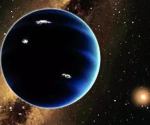Sun’s eruptions are killing off SpaceX’s Starlink satellites, claims NASA scientist

A new report claims that sun eruptions are shortening the lives of satellites in Earth orbit, especially SpaceX’s Starlink satellites. According to a report by New Scientist, a study by Denny Oliveira at NASA’s Goddard Space Flight Centre in Maryland has revealed the effect of geomagnetic storms on satellites, increasing their drag.

The report revealed that the sun has an 11-year cycle of activity, whose peak is known as the solar maximum. During this cycle, the sun’s eruptions grow, creating geomagnetic storms that heat the Earth’s atmosphere, making it swell outwards.
This effect last occurred in late 2024, and Oliveira and his team studied the effect this had on Starlink. “We found that when we have geomagnetic storms, satellites re-enter faster than expected [without solar activity],” he said, adding that solar maximum periods can reduce the lifetime of a satellite by up to 10 days.
Starlink satellites affected
With more satellite launches, the effect has become apparent, especially on SpaceX satellites, of which over 7,000 are currently orbiting the Earth. With more launches scheduled every week, new satellites are being added, as SpaceX plans to have over 30,000 of them orbiting in the future.
However, the report added that there are also several re-entries each week. “It’s the first time in history we have so many satellites re-entering at the same time. Between 2020 and 2024, 523 Starlink satellites were tracked re-entering our atmosphere, where they are designed to entirely burn up. In a few years, we will have satellites re-entering every day,” said Oliveira.
While some satellites from Starlink satellites are lowered into the atmosphere at the end of their life, others fall under atmospheric drag when they fail. According to Oliveira, the recent geomagnetic events, 37 Starlink satellites re-entered after five days, down from more than 15 days.
Is this harmful?
Now, is this harmful for the growing satellite launches? Sean Elvidge at the University of Birmingham, UK, told New Scientist that this could help satellite operators like SpaceX by removing dead satellites, which may be a threat to other satellites, from orbit more quickly.
However, it would limit the ability to use satellites in orbits below 400 kilometres. Additionally, quicker re-entries could prevent satellites from completely burning up in Earth’s atmosphere and could actually reach the ground.
In August 2024, a 2.5-kilogram fragment of a Starlink satellite was discovered on a farm in Saskatchewan, Canada becoming the only confirmed case, according to SpaceX, of Starlink debris surviving atmospheric re-entry.















